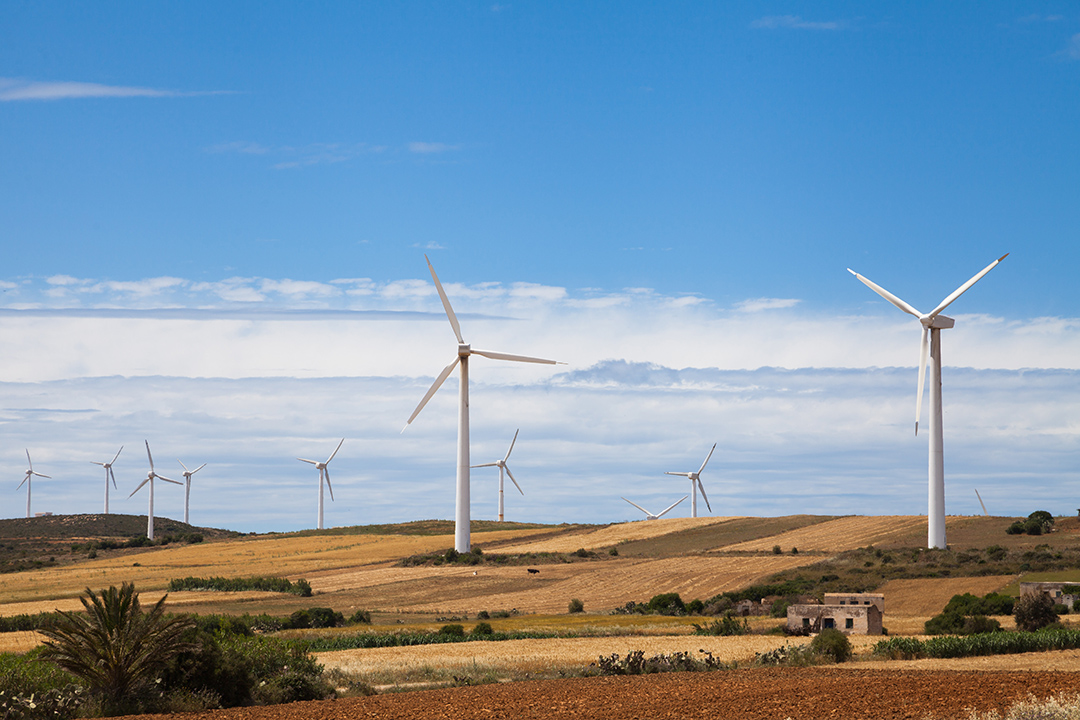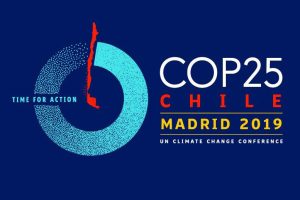Recent discussions and reports assessing the effectiveness of climate finance flows to meet an increasing global need reveal a growing momentum for aligning such flows with the ultimate objective of the UNFCCC. This Policy Brief casts these developments against Parties’ goal of “making finance flows consistent” with the Paris Agreement on climate change. In this context, the Policy Brief also discusses the European Investment Bank’s (EIB) decision to end funding fossil fuel energy projects.
EIB Ends Funding of Fossil Fuel Energy Projects
In November 2019, the EIB Board adopted a decision to end financing for fossil fuel energy projects by the end of 2021. In its energy lending policy, aimed at supporting the energy transformation, the Bank further laid out its climate action and environmental sustainability strategy and focus on support for clean energy and security.
Specifically, the policy change means that the Bank will phase out support to:
- the production of oil and natural gas;
- traditional gas infrastructure;
- power generation technologies resulting in greenhouse gas (GHG) emissions above 250 gCO2 per kWh of electricity generated; and
- large-scale heat production infrastructure based on unabated oil, natural gas, coal or peat.
The Bank will potentially continue to approve gas infrastructure projects already formally under appraisal until the end of 2021, noting that switching from oil or coal to natural gas may reduce GHG emissions in the short term.
The EIB explains that it will support clean energy and security directly by: reinforcing electricity networks; reducing energy demand through energy efficiency projects or through low-carbon power generation; and deploying demand response or storage at scale. According to the policy, five principles will govern future EIB engagement in the energy sector:
- Prioritizing energy efficiency with a view to supporting the new EU target under the EU Energy Efficiency Directive;
- Enabling energy decarbonization through increased support for low- or zero-carbon technology, aiming to meet a 32% renewable energy share throughout the EU by 2030;
- Increasing financing for decentralized energy production, innovative energy storage and e-mobility;
- Ensuring grid investment for new, intermittent energy sources like wind and solar as well as strengthening cross-border interconnections; and
- Increasing the impact of investment to support energy transformation outside the EU.
Furthermore, the EIB Group stated that it expects its financing to unlock EUR 1 trillion of climate action and environmental sustainable investment in the decade to 2030. The Bank will gradually increase the share of its financing dedicated to climate action and environmental sustainability to reach 50% of its operations in 2025.
Outside the EU, the Bank foresees to support energy access with the development of energy systems that are low-carbon, efficient and reliable. The Bank’s energy lending volume represents only a small fraction of the required investment outside the EU. Looking to finance projects that reinforce countries’ Nationally Determined Contributions (NDCs) under the Paris Agreement, the Bank will support projects in sub-Saharan Africa, and energy transformation in other regions, in particular Asia and Latin America.
Aiming to Make Finance Flows Consistent with Paris Agreement
Collectively, the EIB and the EU and its member States are the largest providers of public climate finance globally to developing countries, accounting for EUR 21.7 billion in 2018, including EUR 2.65 billion from the European Commission and EUR 2.97 billion from the EIB. The European Commission highlights this collective commitment, which kept increasing over the past five years, in the Fourth Biennial Report from the EU to the UNFCCC.
Like the EU, most developed country Parties have also submitted their biennial reports, as requested, by January 2020. These reports inform of Annex I Parties’: quantified economy-wide emission reduction targets; progress made towards their achievement, including information on mitigation actions and their effects, the estimates of emission reductions and removals, and the use of units from market-based mechanisms and land use, land-use change, and forestry (LULUCF) activities; GHG emission trends and projections; and the provision of financial, technological and capacity-building support to developing country Parties.
This information is relevant for the Paris Agreement’s long-term temperature goal as well as adaptation and finance objectives, which are expressed in general terms in the Agreement’s provision articulating its purpose. On finance, Parties agreed to make “finance flows consistent with a pathway towards low greenhouse gas emissions and climate-resilient development” (Paris Agreement Article 2.1(c)).The EU’s BR4 stands out in this regard as it reports on EU’s implementation of this provision.
The European Commission explains its commitment to mainstream climate change mitigation and adaptation into all major EU spending programmes, with reference to the EIB’s Energy Lending Policy and the 2020 EU budget. With total commitments set at EUR 168.7 billion, the budget was endorsed in November 2019. To meet the goal of dedicating at least 20% of EU expenditure to climate protection in the period 2014-2020, the European Parliament and the Council of the EU agreed to increase the focus on climate-related actions in several areas. These include research and development, transport and energy infrastructure and the EU’s external action. Additional funds of EUR 590 million were allocated to the EU’s LIFE programme, the EU’s funding instrument for the environment and climate action, with a budget of EUR 3.4 billion for the 2014-2020 funding period. The European Commission also informs of its pledge to report on the “at least 25%” earmarking for the next financial framework 2021-2027.
The EU’s aim to make finance flows consistent with its climate commitments involves:
- revenue spending from auctioning of EU ETS allowances;
- diverting subsidies under the Renewable Energy Directive for transport sector from biofuel feedstocks with high indirect land use change emissions risks;
- developing metrics and monitoring methodologies to track progress concerning finance flows; and
- mobilizing the private sector through sustainable finance initiative and climate-related financial disclosure requirements.
Tracking Progress on the Paris Agreement’s Long-term Finance Goal
The UNFCCC Standing Committee on Finance (SCF) is preparing the 2020 biennial assessment and overview of climate finance flows. For this purpose, the Committee has called for submissions on evidence, including a list of needed information and data, with regard to:
- methodological issues relating to measuring, reporting, and verifying climate finance flows;
- data on climate-related finance flows;
- assessment of the effectiveness of climate finance flows, including drivers, impact results, meeting needs, and access; and
- information relevant to Paris Agreement Article 2.1(c).
A call for improving understanding of finance flows was also heard during discussions at the Chile/Madrid Climate Change Conference in December 2019. Parties’ views, however, diverged on establishing a common definition of climate finance and on commencing work on the new collective post-2025 finance goal prior to the scheduled negotiations, to commence at the UN Climate Change Conference in Glasgow, UK, in November 2020.
At its 21st meeting in October 2019, the SCF addressed the determination of the needs of developing country Parties related to implementing the Convention and the Paris Agreement, which Parties had mandated the SCF to report on every four years, beginning in 2020. Prior to the meeting, the UNFCCC overhauled its Climate Finance Data Portal, which captures information, graphics and figures for a better understanding of climate finance flows, and informs of activities funded in developing countries to implement climate action, particularly financial flows that have been channeled, mobilized and leveraged by the Global Environmental Facility (GEF) and the Green Climate Fund (GCF). It also presents information on Adaptation Fund project data related to entities, projects and programmes approved by the Adaptation Fund Board.
Defining Ways to Make Finance Flows Consistent with Paris Agreement
According to the findings by the Organisation for Economic Co-operation and Development (OECD), momentum for aligning climate finance flows with the Paris Agreement is growing. Which multilateral development banks (MDBs) will follow in the EIB’s footsteps and take measures in support of the energy transformation? In its report titled, ‘Aligning Development Co-operation and Climate Action: The Only Way Forward,’ the OECD stressed that, in the case of “development finance,” support for energy efficiency and renewables has increased since the Paris Agreement, but continues to be undermined by financing for new fossil fuel-based energy. That means multilateral providers overall, which accounted for 77% of funding of fossil fuel activities in 2016 and 2017, need to change.
The complexity of “climate finance” is illustrated by data gaps, and heated negotiations characterized by diverging views on: what constitutes “new and additional” climate funding; whether climate finance should be excluded from being counted as official development assistance (ODA); and using private sector investments to meet climate finance needs.
Nevertheless, though drafted in general terms, the Paris Agreement provision on “making finance flows consistent with a pathway towards low greenhouse gas emissions and climate-resilient development” reflects a certain degree of agreement among Parties. As the wording suggests, such efforts may entail whatever lies within state power, for example regulations, green fiscal policies, and providing public sustainable development aid to cause finance to flow in the direction of carbon neutrality. Yet given the time pressure to achieve the ultimate objective of the UNFCCC, some have pointed to a growing realization that while necessary, globally, public finance alone may not be sufficient. While welcome, announcements such as by the EIB to double its share of sustainable financing to 50% are not enough to achieve the goals of the Paris Agreement, making palpable the need for private sector investments at scale.
Private sector stakeholders, in turn, are certainly aware of their own climate change risks, including the issue of stranded assets, as noted in recent news. Companies are beginning to change their business models, expecting future revenues from demand for low-emission products and services. How this will influence climate finance flows, however, remains to be seen. Governments will have to identify their role in transforming economies and determine how to enable a shift in economic activities. In affluent societies, this may warrant considerations of basing these activities not only on the principle of “eco-efficiency,” which focuses on increasing output per unit of input, but also “eco-sufficiency,” which requires a reduction in the consumption of energy and natural resources and in the generation of waste and emissions in absolute terms.



